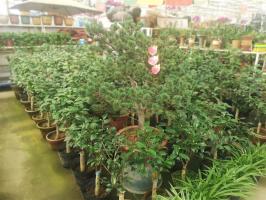How to Add Magnesium to Potted Plants
When it comes to growing potted plants, soil health is of utmost importance. Many gardeners are familiar with the concept of adding nitrogen, phosphorous, and potassium to soil, but what about magnesium? Magnesium is a critical nutrient for plant health, and deficiency can lead to stunted growth and yellowing leaves. In this article, we will explore different methods for adding magnesium to potted plants.
1. Epsom Salt
Epsom salt is a popular home remedy for aches and pains, but did you know it can also benefit your potted plants? Epsom salt is actually magnesium sulfate, a compound that can be easily absorbed by plant roots. To use Epsom salt as a fertilizer, dissolve 1 tablespoon in 1 gallon of water and apply to the soil once a month.
2. Dolomite Lime
Dolomite lime is a type of limestone that is high in magnesium. It is sold in powdered form and can be mixed into potting soil before planting or top-dressed onto the soil surface. Dolomite lime can be purchased at most garden centers and online retailers.
3. Compost
Compost is a great way to add a variety of nutrients to potted plants, including magnesium. When creating your own compost, include materials high in magnesium, such as seaweed, banana peels, and eggshells. These materials will break down over time, releasing their nutrients into the soil.
4. Fertilizer
Many fertilizers contain magnesium, so investing in a quality fertilizer can do wonders for your potted plant health. Look for fertilizers labeled as having high levels of magnesium or containing Epsom salt.
5. Foliar Spray
A foliar spray is a liquid fertilizer that is sprayed directly onto the leaves of potted plants. It can quickly deliver magnesium and other nutrients to the plant. To make a foliar spray, dissolve 1 teaspoon of Epsom salt in 1 quart of water and spray onto the leaves once a month.
Conclusion
Magnesium is a vital nutrient for potted plants, and deficiency can lead to poor growth and yellow leaves. Adding magnesium to your potted plants is easy and can be done through various methods, including Epsom salt, dolomite lime, compost, fertilizer, and foliar spray. By incorporating these methods into your plant care routine, you can ensure your potted plants are healthy and thriving.

 how many times do yo...
how many times do yo... how many planted tre...
how many planted tre... how many pine trees ...
how many pine trees ... how many pecan trees...
how many pecan trees... how many plants comp...
how many plants comp... how many plants can ...
how many plants can ... how many plants and ...
how many plants and ... how many pepper plan...
how many pepper plan...
































